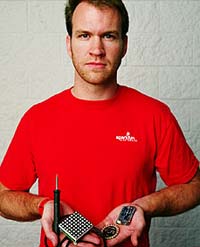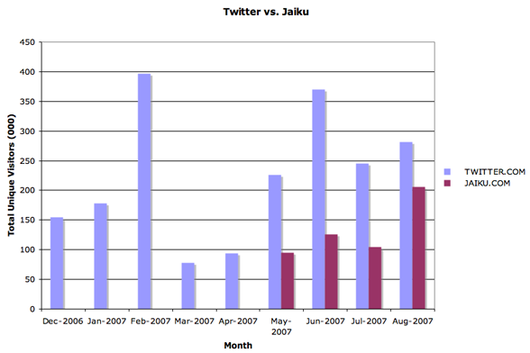When Nathan Seidle blew up some electronics in late 2002, he began to scour the internet for replacement parts. But the results disappointed him. “The state of online electronics stores was pretty horrible,” he recalls. “I remember just wanting to see a picture, any picture, of what it was I was trying to order. But with that frustration came the clarity that there was an opportunity. Maybe, just maybe, I could start a website that sold electronic bits and pieces — and they would have pictures. Non-blurry pictures! And maybe even a picture of the back of the electronic device. In 2002, this was blasphemy. Electronics were ugly — who would want to see the back side? But I knew I did, and I figured there were a few other people with similar needs.”
 So in 2003, he started brainstorming business names. He realized making sparks is really what started him down this path. “Any time I’m frying things, I’m always having fun and pushing the limits of my abilities. When I found the SparkFun.com domain available, I knew it was perfect.”
So in 2003, he started brainstorming business names. He realized making sparks is really what started him down this path. “Any time I’m frying things, I’m always having fun and pushing the limits of my abilities. When I found the SparkFun.com domain available, I knew it was perfect.”
Not knowing what to sell, Seidle (right, in a photo from CNNMoney.com) originally purchased just a handful of products. The orders started coming in immediately, but at a slow pace — one or two per day. “Over time, I was able to write more tutorials and build more projects using the parts we sold,” says Seidle. “It was not until 2004, once I graduated from University of Colorado that I had time to design original SparkFun products. Ever since, we’ve been growing our design and production abilities.”
Now, SparkFun helps customers assemble all kinds of projects, from an earthquake data logger to a high altitude balloon to a touchscreen mouse. Products include things like resistors, LEDs, humidity sensors, and LCD screens which are sold to crafters, designers, artists, DJs, teachers, professors, and engineers. In addition to online tutorials, SparkFun now offers classes too.
Starting from scratch
The business began with about $2500 worth of credit card debt, according to Seidle. “I believe about $2000 went to inventory purchases and $500 went to infrastructure including $25 for a scale, $15 for a tape gun, etc. I forgot to buy boxes to actually ship product to customers. How I made it this far is good fodder for pundits.”

This Arduino Mobile Camera by “Dr_Speed” uses Bluetooth control from an Android phone, a Canon A530 Camera, and a Vex mobile base.


 So in October 2007,
So in October 2007, 
